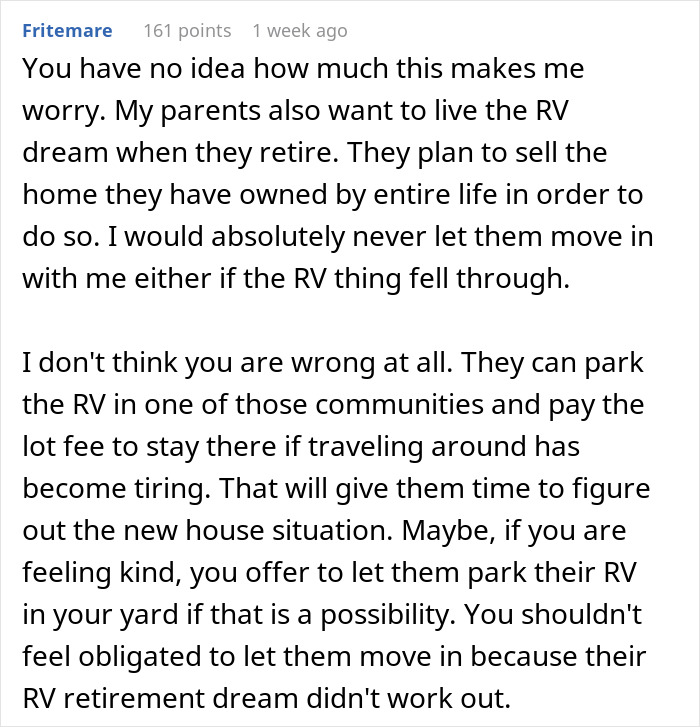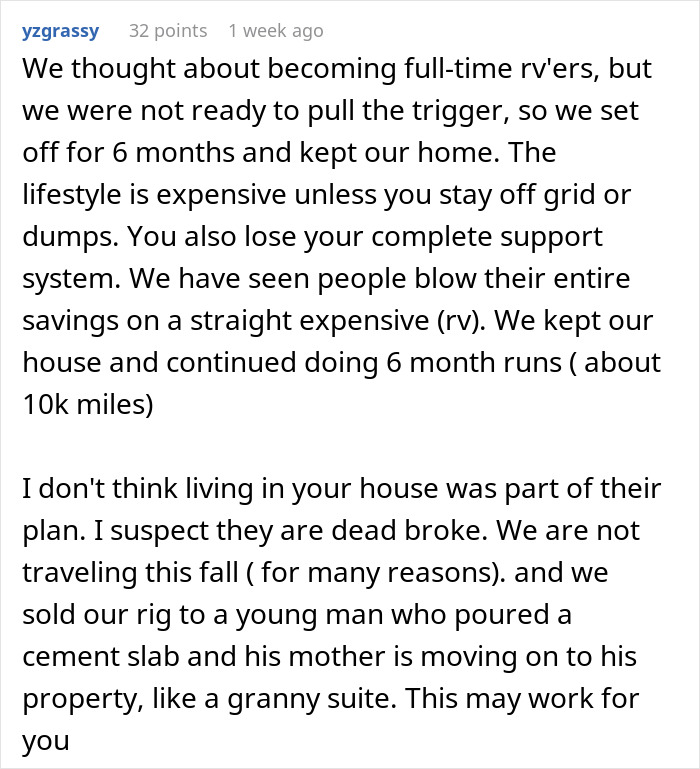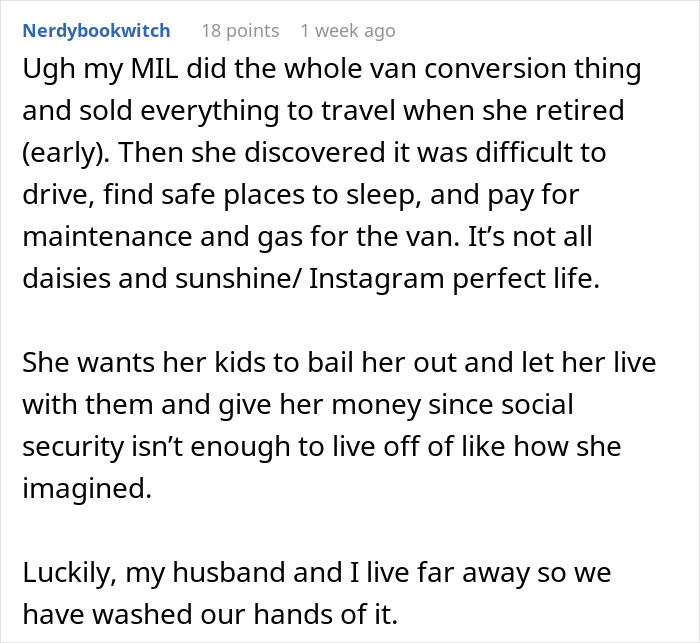Boomer parents moving back in with their adult children isn’t a new thing. Money has been the primary reason, for the most part, especially since many elders failed to save for their retirement.
The story you’re about to read has a slightly different premise. A couple decided to sell their home and travel full-time, but their sudden change of plans led them to move in with their daughter.
The woman initially welcomed the idea as a show of love for her parents. However, things got heated when she refused a longer-term arrangement.
After an episode of emotional blackmail from her mother, the author asks the internet if she is out of line. Scroll down for the full story.
Many boomer parents have been moving back in with their adult children out of financial necessity

Image credits: westend61 (not the actual photo)
A woman endured emotional blackmail from her mother when she refused to let both her parents live with her for a prolonged period







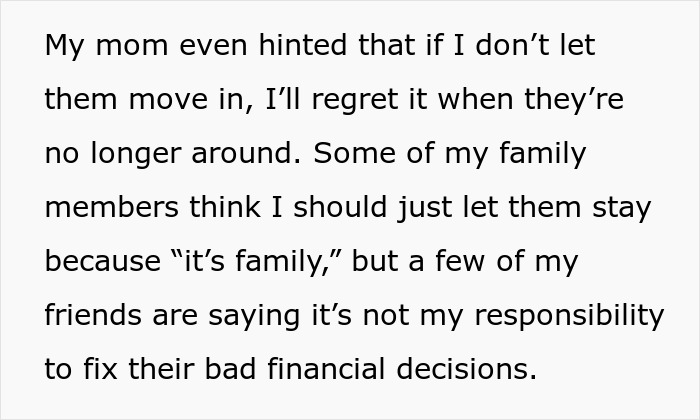
Image credits: GaudiLab (not the actual photo)
She later clarified her decision and asked the internet if she was in the wrong


Image source: Outside-Advice8413
23% of Americans feel “stressed” about living in multigenerational homes

Image credits: Kampus Production (not the actual photo)
The author isn’t alone in her distress about having her folks move in with her. According to statistics by Pew Research, 23% of Americans find living in a multigenerational household stressful.
These sentiments are more common among adult children, accounting for 31% of respondents.
Multigenerational households have their fair share of pros and cons. Investment advisor Triton Financial Group pointed out one upside: a built-in support system. Caregiving becomes less of a burden for aging parents and younger children.
Relatives also grow closer to each other, strengthening family bonds. However, the most significant benefits are in finances since shared expenses significantly reduce living costs.
On the other hand, the deterioration of relationships can be the biggest drawback of a multigenerational home. It can be particularly true among family members who are used to living apart. The sudden co-existence under one roof may create conflict, especially when there are differences in beliefs and opinions.
The author seemed to have this problem, particularly with her parents possibly invading her personal space. It did cause some conflict between her and her mother, which is always unfortunate.
There are dos and don’ts to ensure a harmonious cohabitation between parents and adult children

Image credits: Mikhail Nilov (not the actual photo)
Parents and children must come to an understanding to avoid unpleasant living situations. Part of this involves adhering to a few dos and don’ts.
In an article for LinkedIn, senior care professional Troy Tice emphasized the importance of having open and honest conversations. Both parties should lay out their expectations and set boundaries, which include respect for personal space, daily routines, and the division of household responsibilities.
Children with elderly parents must also ensure a senior-friendly living environment. Tice pointed out necessary modifications such as bathroom grab bars and adequate lighting to prevent accidents that older people are more prone to.
As for the don’ts, Tice advises against making assumptions about each other’s expectations.
“Take time to express concerns, ask equations, and clarify any misunderstandings,” he wrote.
Should conflicts arise from this new living arrangement, Troy urges addressing them respectfully and constructively through open dialogue, active listening, and the willingness to compromise.
The author seemed clear about her issues with personal space and explained why having her parents over for a year or two doesn’t sit well with her. Unfortunately, the mom took the wrong way and resorted to guilt-tripping instead of having a dialogue to resolve any issues.
What do you think, readers? Was the woman wrong for refusing to have her parents move in?
Most commenters sided with the woman



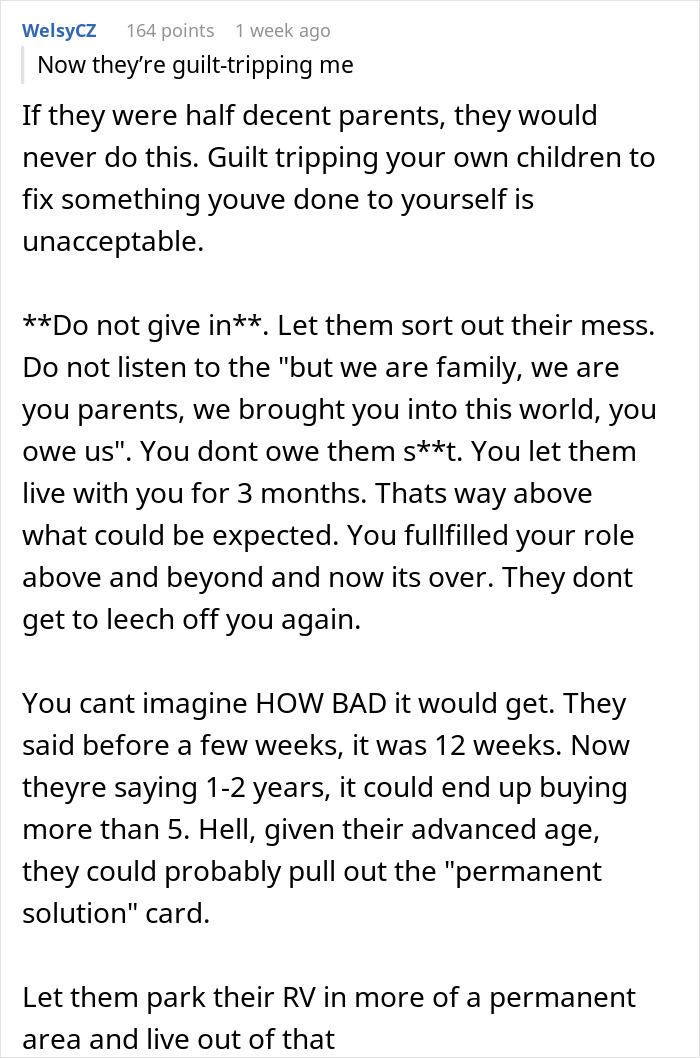
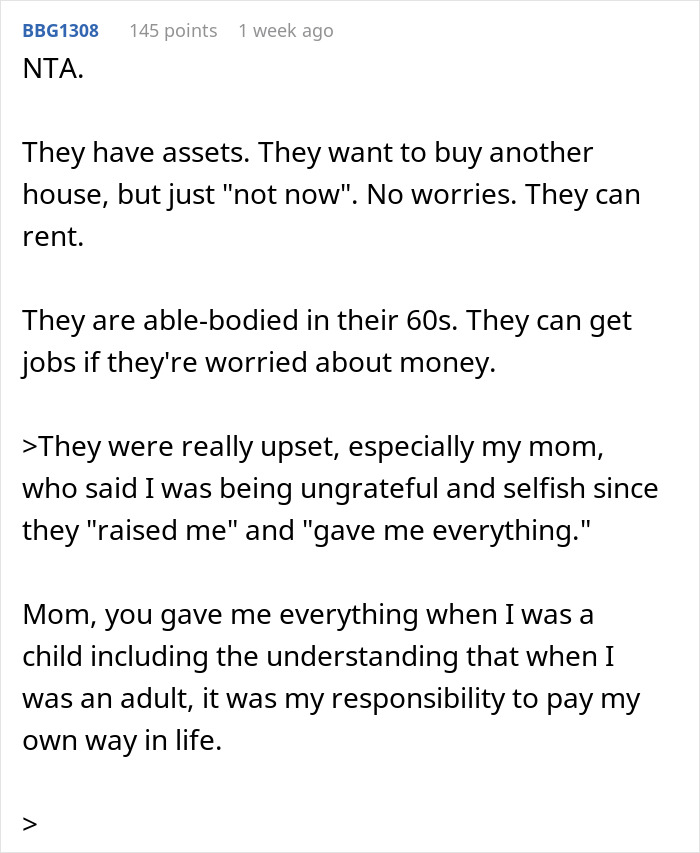



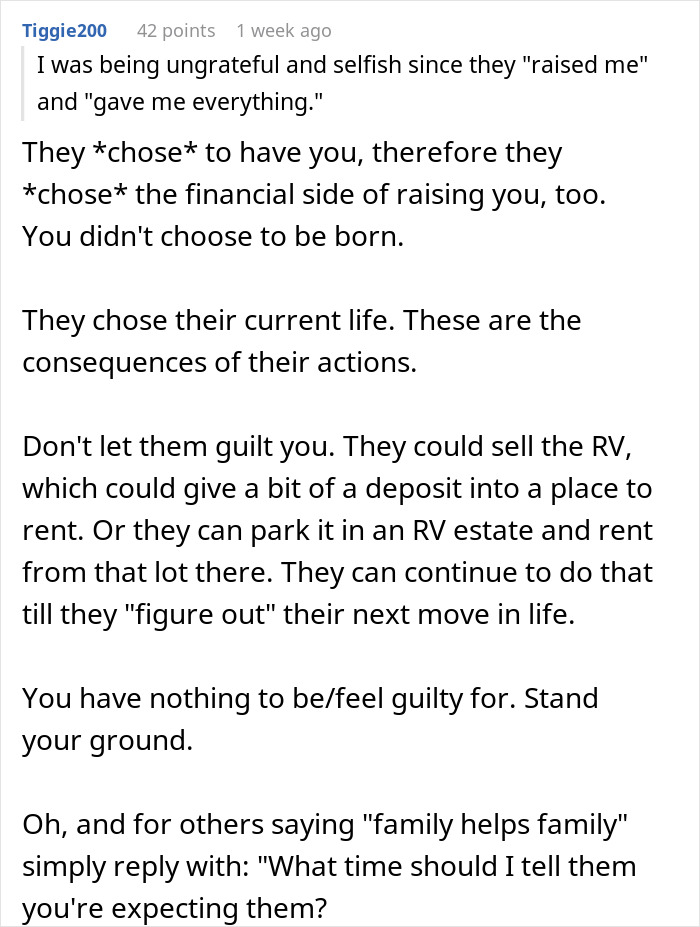



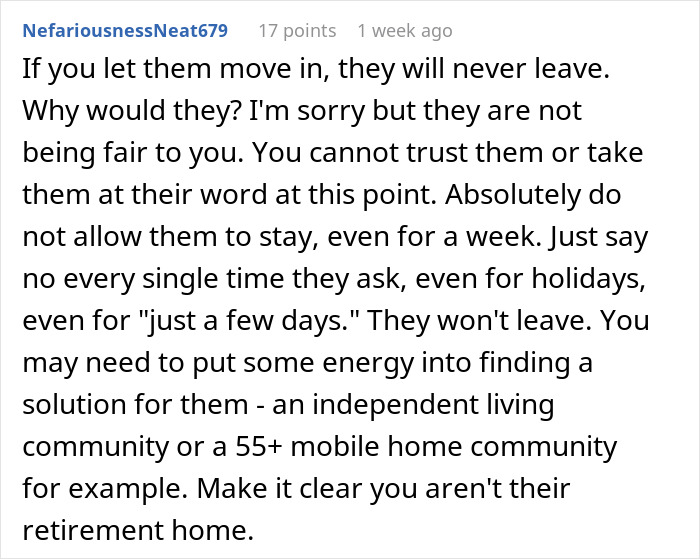

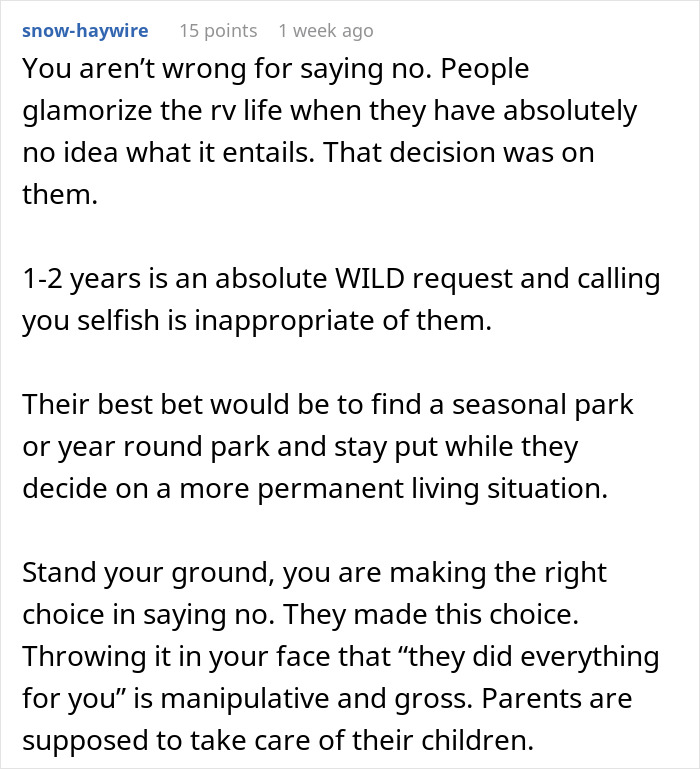


Others shared similar experiences
